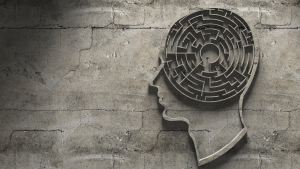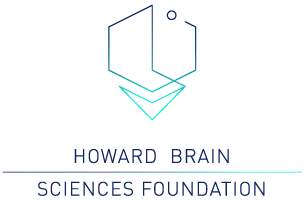The COVID-19 pandemic has had many secondary effects on society. While the immediate risks and effects of the disease are not to be taken lightly, being aware of mental health is an important part of responding to COVID-19. While it is too early to have significant research on how COVID-19 directly affects mental health, there is research on the effects of isolation and past pandemics on psychosocial function.  Psychosocial functioning “reflects a person’s ability to perform the activities of daily living and to engage in relationships with other people in ways that are gratifying to [one’s self] and others, and that meets the demands of the community in which the individual lives” (Mehta, Mittal & Swami, 2014). Examples of psychosocial factors include personality, social support, psychological stress, and their environment. The decreased psychosocial function can be an effect of mental illness, such as depression, however, psychosocial support is also associated with better functioning despite mental illness (Mehta, Mittal & Swami, 2014; Demant, Vinberg, Kessing & Miskowiak, 2015).
Psychosocial functioning “reflects a person’s ability to perform the activities of daily living and to engage in relationships with other people in ways that are gratifying to [one’s self] and others, and that meets the demands of the community in which the individual lives” (Mehta, Mittal & Swami, 2014). Examples of psychosocial factors include personality, social support, psychological stress, and their environment. The decreased psychosocial function can be an effect of mental illness, such as depression, however, psychosocial support is also associated with better functioning despite mental illness (Mehta, Mittal & Swami, 2014; Demant, Vinberg, Kessing & Miskowiak, 2015).
For people with less psychosocial support, there is an increased risk of illness, as higher stress levels and lower psychosocial functioning is associated with being immunocompromised (Biondi & Zannino, 1997). Unfortunately, the threat of disease and the effects of isolation can also contribute to overall stress. Prolonged boredom and isolation “can produce mental abnormalities in the form of hallucinations, anxiety states, depression, and paranoid symptoms,” and often worsens pre-existing mental illness (Ziskind, 1958; Elisha, Castle & Hocking, 2006; Sheridan et al., 2015). Although social-distancing and self-isolation are ultimately beneficial, it has limited the population’s psychosocial support network. For those who lack sufficient social support at home or cannot bolster it through digital communications may lead to detriments in their mental health. Medical support networks have also switched to relying on digital communications, the use of telehealth and telemedicine has increased. These services are often an effective solution, but require access to technology and digital literacy.
Poor mental health is also exacerbated by fear regarding the virus, some of which are influenced by disease mongering. Disease mongering is a term that refers to “creating in people the belief that they are ill in order to sell them a product, usually a high-priced pharmaceutical” (Vance, 2011). Disease mongering includes, “[maximizing] the number of people perceived to be at risk” (Vance, 2011). This is not to claim that COVID-19 is not a serious threat. Instead, people will experience greater fear around COVID-19 due disease mongering rhetoric. The rhetoric used during disease mongering is framed as objective or related to a medical necessity, but is actually designed to sell a product. Unfortunately, this rhetoric is designed to be difficult to differentiate from legitimate information (Vance, 2011).
While this is a collectively stressful time, the following populations may feel additional stress: caregivers, healthcare providers and first responders, children and teenagers, the elderly, the immunocompromised and the economically disadvantaged (Center for Disease Control, 2020). It also may serve as a traumatic trigger for those who have survived previous pandemics. These groups each have unique psychosocial factors, which contribute to individual stress. The Center for Disease Control (CDC) has described some possible manifestations of stress as follows: fear and worry about your health and the health of your loved ones, changes in sleep or eating patterns, difficulty sleeping or concentrating, worsening of chronic health problems, worsening of mental health conditions, and increased use of alcohol, tobacco, or other drugs (CDC, 2020). In terms of mental health changes in those who contract COVID-19 commonly develop: concerns about protecting oneself from the virus, concern over disrupted medical care and services, feeling isolated and/or guilty, and increased levels of distress due to mental health concerns, language barriers, or experiencing stigma around the virus (CDC, 2020).
Though none of these are a silver bullet, there are several skills one can build from at home to help mitigate stress. Exercising 3 times a week for 20-40 minutes can boost one’s mood and alleviate some depression and anxiety, as can getting regular sleep and building a regular meditation and mindfulness practice (Craft & Perna, 2005; Nutt, Wilson & Patterson, 2008; Ramel, Goldin, Carmona, & McQuaid; 2004). Lastly, the CDC has collected several mental health resources available here, as has Mental Health America available here. HBSF is also connecting patients to resources via our patient advocacy program, which can be reached at patientadvocacy@brainsciences.org.
Written by Senia Hardwick
References
Biondi, M., & Zannino, L.-G. (1997). Psychological stress, neuroimmunomodulation, and susceptibility to infectious diseases in animals and man: A review. Psychotherapy and Psychosomatics, 66(1), 3–26. https://doi.org/10.1159/000289101
CDC. (2020, February 11). Coronavirus Disease 2019 (COVID-19). Centers for Disease Control and Prevention. https://www.cdc.gov/coronavirus/2019-ncov/daily-life-coping/managing-stress-anxiety.html
Craft, L. L., & Perna, F. M. (2004). The benefits of exercise for the clinically depressed. Primary Care Companion to The Journal of Clinical Psychiatry, 6(3), 104–111.
Demant, K. M., Vinberg, M., Kessing, L. V., & Miskowiak, K. W. (2015). Assessment of subjective and objective cognitive function in bipolar disorder: Correlations, predictors and the relation to psychosocial function. Psychiatry Research, 229(1–2), 565–571. https://doi.org/10.1016/j.psychres.2015.05.022
Elisha, D., Castle, D., & Hocking, B. (2006). Reducing social isolation in people with mental illness: The role of the psychiatrist. Australasian Psychiatry, 14(3), 281–284. https://doi.org/10.1080/j.1440-1665.2006.02287.x
Lavi, E., Das Sarma, J., & Weiss, S. R. (1999). Cellular reservoirs for coronavirus infection of the brain in β2-microglobulin knockout mice. Pathobiology, 67(2), 75–83. https://doi.org/10.1159/000028054
Mehta, S., Mittal, P. K., & Swami, M. K. (2014). Psychosocial functioning in depressive patients: A comparative study between major depressive disorder and bipolar affective disorder [Research Article]. Depression Research and Treatment. https://doi.org/https://doi.org/10.1155/2014/302741
Nutt, D., Wilson, S., & Paterson, L. (2008). Sleep disorders as core symptoms of depression. Dialogues in Clinical Neuroscience, 10(3), 329–336.
Ramel, W., Goldin, P. R., Carmona, P. E., & McQuaid, J. R. (2004). The effects of mindfulness meditation on cognitive processes and affect in patients with past depression. Cognitive Therapy and Research, 28(4), 433–455. https://doi.org/10.1023/B:COTR.0000045557.15923.96
Sheridan, A. J., Drennan, J., Coughlan, B., O’Keeffe, D., Frazer, K., Kemple, M., Alexander, D., Howlin, F., Fahy, A., Kow, V., & O’Callaghan, E. (2015). Improving social functioning and reducing social isolation and loneliness among people with enduring mental illness: Report of a randomised controlled trial of supported socialisation. International Journal of Social Psychiatry, 61(3), 241–250. https://doi.org/10.1177/0020764014540150
Vance, M. A. (2011). Disease mongering and the fear of pandemic influenza. International Journal of Health Services, 41(1), 95–115. https://doi.org/10.2190/HS.41.1.g
Ziskind, E. (1958). Isolation stress in medical and mental illness. Journal of the American Medical Association, 168(11), 1427–1431. https://doi.org/10.1001/jama.1958.03000110001001
